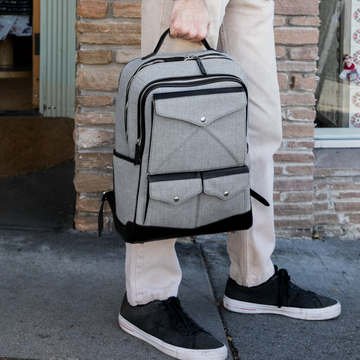In a world where climate change and environmental concerns are at the forefront of global discussions, the fashion industry has come under scrutiny for its significant ecological footprint. However, there is a glimmer of hope emerging through the threads of change – sustainable fashion. Beyond being a trend, it's a powerful movement that holds the potential to make a lasting difference for our planet. In this blog, we'll delve into the concept of sustainable fashion and explore how it can be a meaningful way for individuals to contribute to environmental well-being.
Understanding Sustainable Fashion:

Sustainable fashion is not just a passing fad; it's a paradigm shift in the way we perceive and engage with clothing. At its core, it involves making environmentally conscious choices at every stage of the fashion supply chain. From raw material sourcing to manufacturing processes and end-of-life disposal, sustainable fashion aims to minimize negative impacts on the planet.
Eco-Friendly Materials:
One of the cornerstones of sustainable fashion is the use of eco-friendly materials. Organic cotton, hemp, bamboo, and recycled fabrics are becoming increasingly popular alternatives to conventional, resource-intensive materials. These materials not only reduce the demand for harmful pesticides and chemicals but also minimize water consumption and promote biodiversity.
Ethical Manufacturing Practices:
Sustainable fashion isn't just about the materials; it's also about how those materials are transformed into garments. Ethical manufacturing practices ensure that workers are treated fairly, work in safe conditions, and receive fair wages. By supporting brands that prioritize ethical production, consumers can contribute to creating a fashion industry that values people as much as the planet.
Slow Fashion Movement:

The fast-paced nature of the traditional fashion industry, characterized by rapid production cycles and disposable trends, contributes significantly to environmental degradation. The slow fashion movement encourages consumers to buy fewer, high-quality pieces that stand the test of time. By embracing a minimalist approach to fashion, individuals can reduce their carbon footprint and contribute to a more sustainable industry.
Second-Hand and Upcycled Fashion:
Another impactful way to engage in sustainable fashion is by exploring second-hand and upcycled options. Thrifting and buying pre-owned items not only give clothing a second life but also reduce the demand for new production. Upcycling involves transforming old or discarded garments into new, stylish pieces, showcasing the creative potential of sustainable fashion.
Consumer Awareness and Education:
Building a sustainable fashion industry requires an informed consumer base. Education about the environmental impact of fashion choices empowers individuals to make conscious decisions. By understanding the lifecycle of their clothing and the practices of the brands they support, consumers can align their values with their fashion choices.
Innovations in Sustainable Fashion:

The fashion industry is witnessing remarkable innovations aimed at reducing its environmental impact. From bio fabrication using fungi to waterless dyeing technologies, these advancements hold the promise of transforming the industry. Supporting and promoting brands that invest in such innovations is a way for consumers to contribute to the ongoing evolution of sustainable fashion.
Conclusion:
In the grand tapestry of global issues, sustainable fashion emerges as a thread of hope and change. By making thoughtful choices in the way we dress, we can actively contribute to a healthier planet. Sustainable fashion is not just about looking good; it's about feeling good—knowing that your choices align with a future where fashion and environmental sustainability coexist harmoniously. As consumers, we hold the power to drive this change, one eco-friendly garment at a time. Embrace sustainable fashion, and together, let's weave a better future for the planet we all call home.
Frequently Asked Questions (FAQs):
Why does sustainable fashion matter for the environment?
Sustainable fashion is important because it helps protect the environment. Regular fashion can harm the Earth with its heavy use of resources and pollution. Sustainable fashion, however, uses eco-friendly materials and ethical practices, helping to save resources, lower pollution, and keep our planet healthier.
How do I know if a brand is truly into sustainable fashion?
Finding genuine sustainable brands means doing a bit of checking. Look for certifications like GOTS or Fair Trade on their websites—they show the brand follows strict eco and social rules. Read reviews from other buyers and see if the brand talks openly about where they get their stuff. More people are searching for "how to find sustainable fashion brands," showing a growing interest in smart buying.
Is sustainable fashion only for rich people?
Nope! Sustainable fashion comes in all price ranges. Some fancy brands do it, but many affordable ones are joining in. While regular cheap clothes might seem like a deal, sustainable clothes last longer, making them cost-effective. You can find budget-friendly eco-friendly brands or go thrift shopping. People are searching for "affordable sustainable fashion" and "budget-friendly eco-friendly clothing," showing they want reasonably priced green choices.







